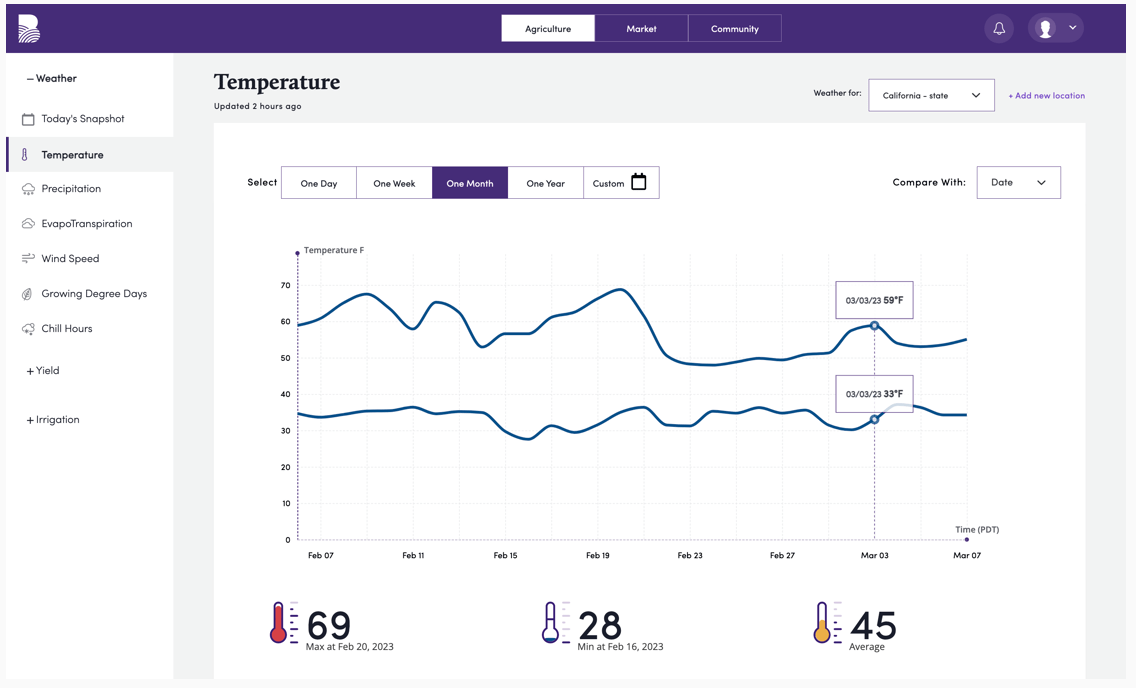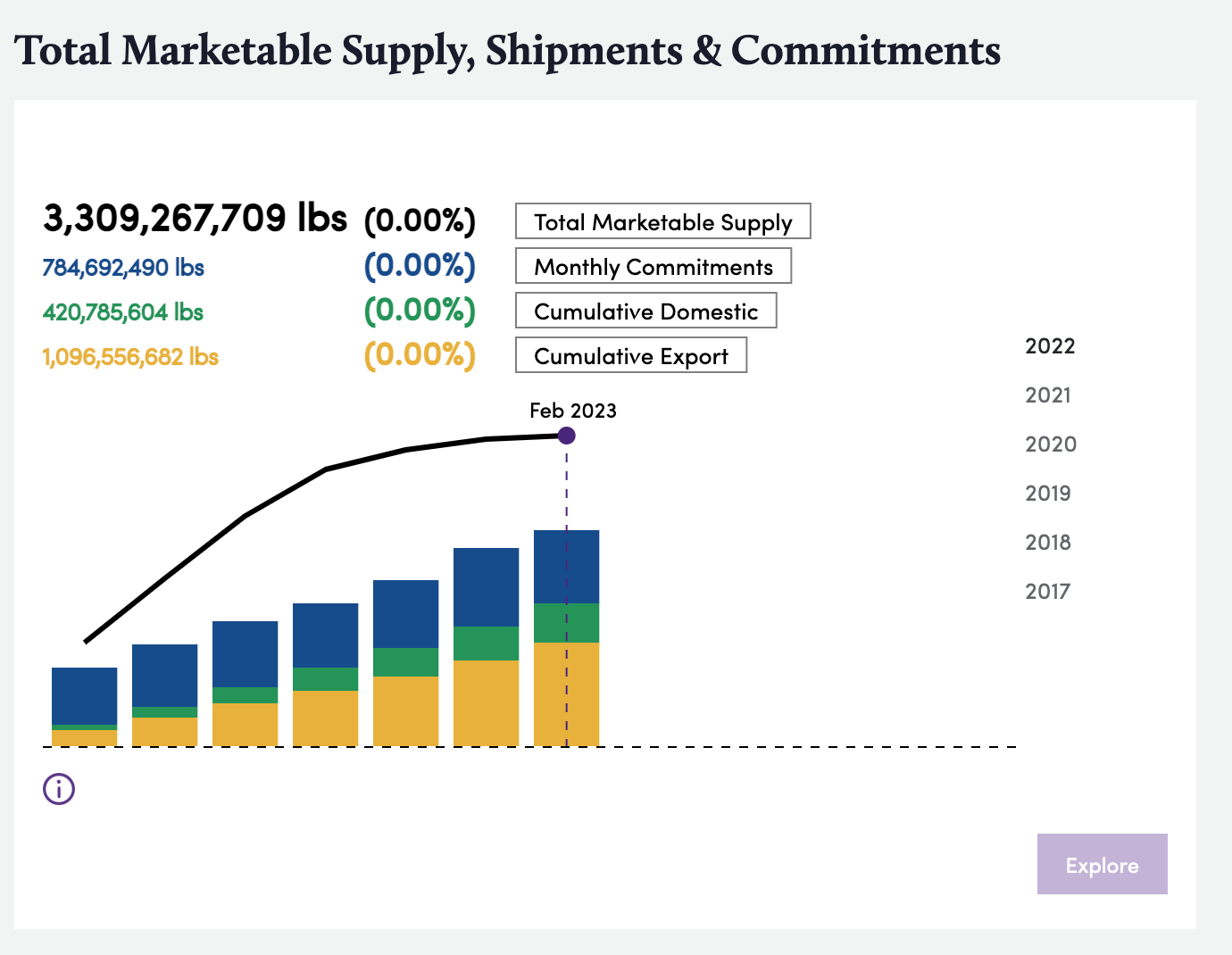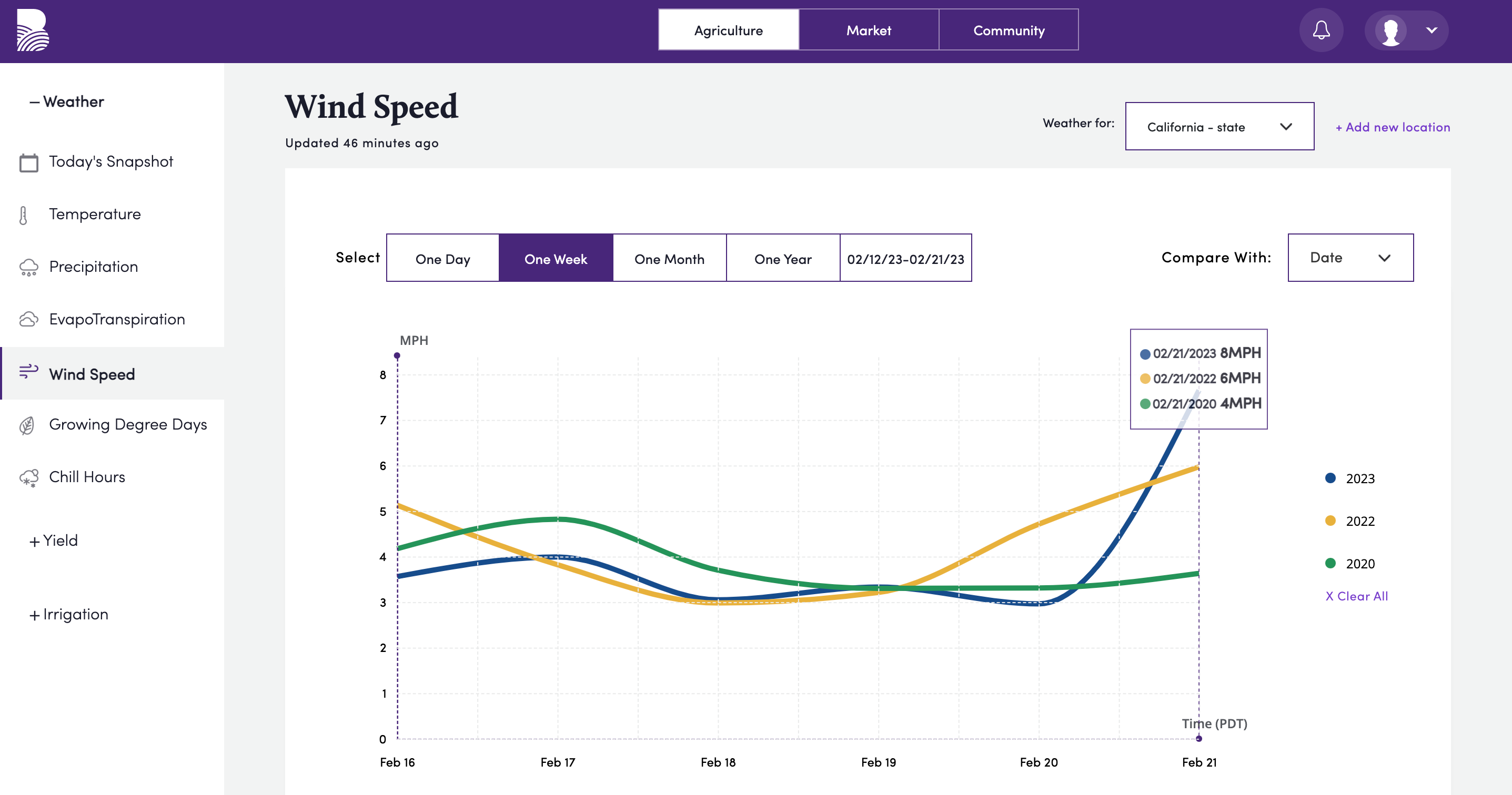Weekly Almond Market Update: 3/2/23 to 3/8/23
Welcome to your Bountiful Almond Market Update.
Bountiful Almond Market Updates every week on Wednesdays. If you're missing some you can subscribe here if needed.
Bountiful Bloom updates will continue to be released on Fridays during bloom. Sharing the last three Bountiful Bloom updates: Feb 17th, Feb 24th, and Mar 3rd with you if you missed them.
This week we're covering:
- February ABC position report, are you ready? it's out tomorrow!
- You guessed it... More weather specifically temperature changes during bloom
Keep reading for this week's latest or sign in to the Bountiful platform to access your Agriculture, Market, and Community data-driven insights.
📝 Are you ready for tomorrow's position report?
Almond Board of California will release the February Position Report tomorrow. You can expect an email from me letting you know it's released and new data has been uploaded for you to the Bountiful platform.
🚢 In the last few weeks we've seen an uptick in Weekly Export records for both shelled and in-shell product.
Just as weather during bloom may impact price, strong or weak shipment demand in any given month also has price implications.
I'm curious how are you speculating what shipments will be on tomorrow's position report? All on your gut and sentiment? Or do you leverage sentiment as your edge and use data to validate what's true or not?
🌡️ Temperature changes during bloom
To say the weather has dominated almond bloom discussions is an understatement. It's all the industry can talk about! This year will be a tremendous learning opportunity for the almond industry specifically on the relationship: bees <> almond pollination.
Last week I brought up 2011, and the poor weather during the first half of bloom, setting California's second-record yield on the back side of bloom. Bee flight hours in 2011 were low but what was happening with chill and temperatures?
👇 You'll see Temperatures for California, highs and lows, over the last 30 days of 2023.
In 2023 our warmer days, so far, we're at the start of bloom, with temperatures dropping around February 23rd and continuing at similar high-low levels into most of March (the latter half of bloom) with a slight bump in temperature on March 3rd.
Now, let's see how the same period looks during 2011.
👇 You'll see the average Temperature for California, over the last 30 days for 2023 vs. 2011

There are some key differences when comparing temperatures during bloom for 2023 vs. 2011. And those differences are all about timing.
In 2011, during early-bloom development, we had a bump in temperatures around February 15th, temperatures then dropped for about two weeks, and starting March 1st temperatures increased, averaging around 50-55 degrees Fahrenheit. Do you know when bloom ended in 2011? It's ok if you don't, I do. It was around March 14th. Providing two weeks of bloom overlap and good temperatures, where bees were able to do their pollination work.
Temperature has a direct impact on Bee Flight Hours and Chill. While it's important to look at summaries of what happened in previous years. I'd argue it's more important to uncover "when", because "when" is where you'll uncover deep insights.
🌸 Following the completion of 2023 bloom I'm planning to share a historic analysis of bloom timing, bee flight, and chill going back to 2011.
Why not further back than 2011? Well, to quote a funny question I was asked this week, "Were you born in 2011 Megan?" 😂
In short no, I wasn't born in 2011.
I'm going back to 2011 because of the weather conditions during bloom that year, also quoted then as unprecedented, and the outcomes on yield + production. You can see it in the data. And as the market prepares individual opinions on crop size, we at Bountiful want to uncover what we can learn from previous years' bloom and crop outcomes compared to what we have seen so far this year. Why? To power you with the best available data as you set your early crop expectations.
And if you have a different opinion on whether a historical look back at bloom timing, bee flight, and chill 2011-present would be valuable for you, I want to know.
Subscribe to Weekly Almond Update for the latest almond market intelligence and industry news.




